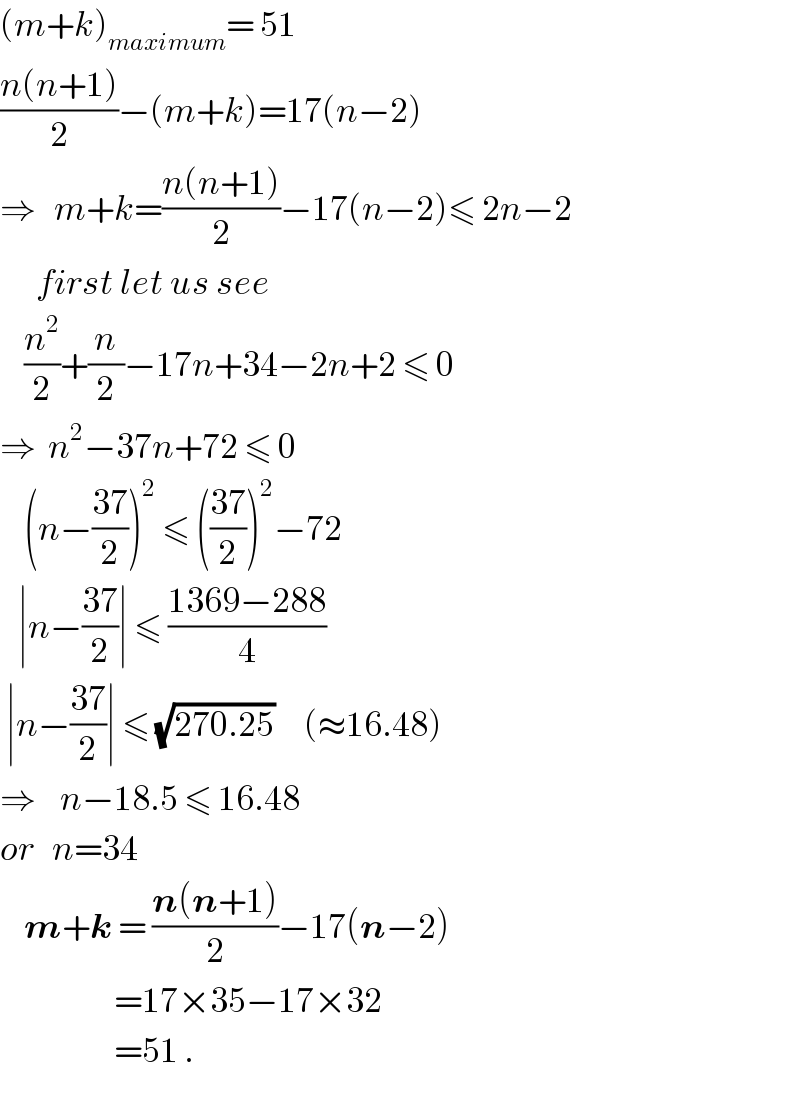
Question and Answers Forum
Question Number 20693 by Tinkutara last updated on 31/Aug/17

Answered by ajfour last updated on 31/Aug/17

Commented byTinkutara last updated on 01/Sep/17

| ||
Question and Answers Forum | ||
Question Number 20693 by Tinkutara last updated on 31/Aug/17 | ||
 | ||
Answered by ajfour last updated on 31/Aug/17 | ||
 | ||
| ||
Commented byTinkutara last updated on 01/Sep/17 | ||
 | ||